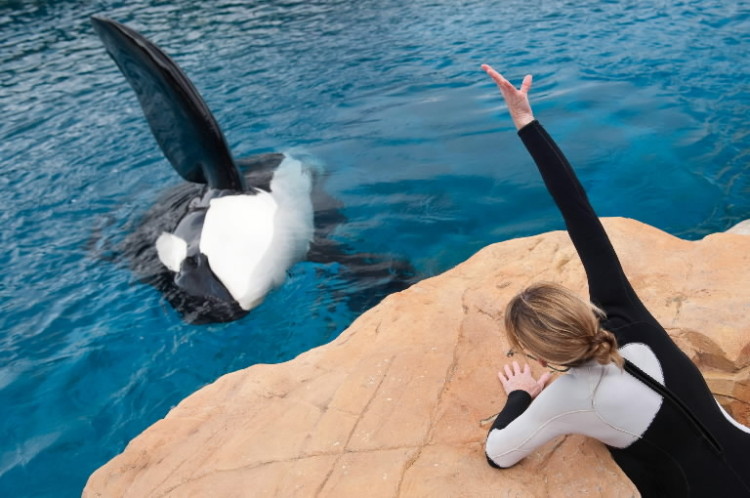After the documentary Blackfish created a wave (pun intended) of backlash for Sea World’s treatment of the enclosed orca whales, Sea World San Diego announced a plan to double the size of its orca enclosure, as well as pledging $10 million toward researching the species. While this is an improvement, the addition is not genuine or adequate relief for these creatures. Although the enclosure may grow substantially in size, it is still an enclosure, and much smaller than the orca’s original enclosure — the ocean. Sea World’s use of the orca whales for entertainment purposes is also far from ethical. The doubling of the tank does not reciprocate for the performances the orcas are forced to perform every day. Also significant is the fact that Sea World is receiving a lot of attention from the media, and these additions seem to resemble a marketing ploy to counteract negative buzz rather than a legitimate desire to reform the orcas’ situation.
Sea World displays the doubling of the tank as a vast improvement for the whales while blatantly ignoring the ocean as the best environment for these creatures. Orcas travel in pods, and as they can weigh up to ten tons each, a cage is not adequate space for these creatures to carry out their natural social processes.
The People for the Ethical Treatment of Animals is specifically critical of this new announcement, calling for the orcas to be put in large-scale ocean shelters.
“A bigger prison is still a prison,” said PETA lawyer Jerry Goodman to the Los Angeles Times.
The orca whales at Sea World are not only forced to breed in captivity, but are also used to entertain paying visitors. The use of large, wild animals for entertainment purposes is unnatural, and has led to multiple accidents in which the negatives outweigh the positives, and deaths could have been easily avoided. For example, in 1991, an orca pulled his trainer to the bottom of the pool after she had fallen in, drowning her. In 2010, the same orca was involved in another incident in which he dismembered and drowned another trainer during a live performance. Orcas in the wild, on the other hand, display very different temperaments, with zero documented cases of killing human beings. These acts of aggression in captivity prove that the stress of unnatural confinement promotes hostility within the orcas, and that a tank is an unsuitable living environment for a creature that can weigh up to 20,000 pounds.
Sea World has also made the announcement at a time when ticket sales are at a low, displaying the association between the improvements to the enclosure and the repercussions of the bad publicity. The company itself stated that ticket sales have been hurt from claims that the whales are being mistreated.
“I think Sea World is responding to its low ticket sales by trying to adapt their park to the ideas seen in Blackfish,” said junior Shane Munson. “If the ticket sales had not gone down due to the bad publicity, the change in the enclosure size would probably not have been made.”
As seen through the multiple incidents of orca aggression, an enclosure is not a suitable environment for the whales, no matter the size. Sea World will not be able to reverse its wrongdoings through pledges and public relation stunts, but can instead gain back public approval by choosing morality over greed and setting the orcas free.








